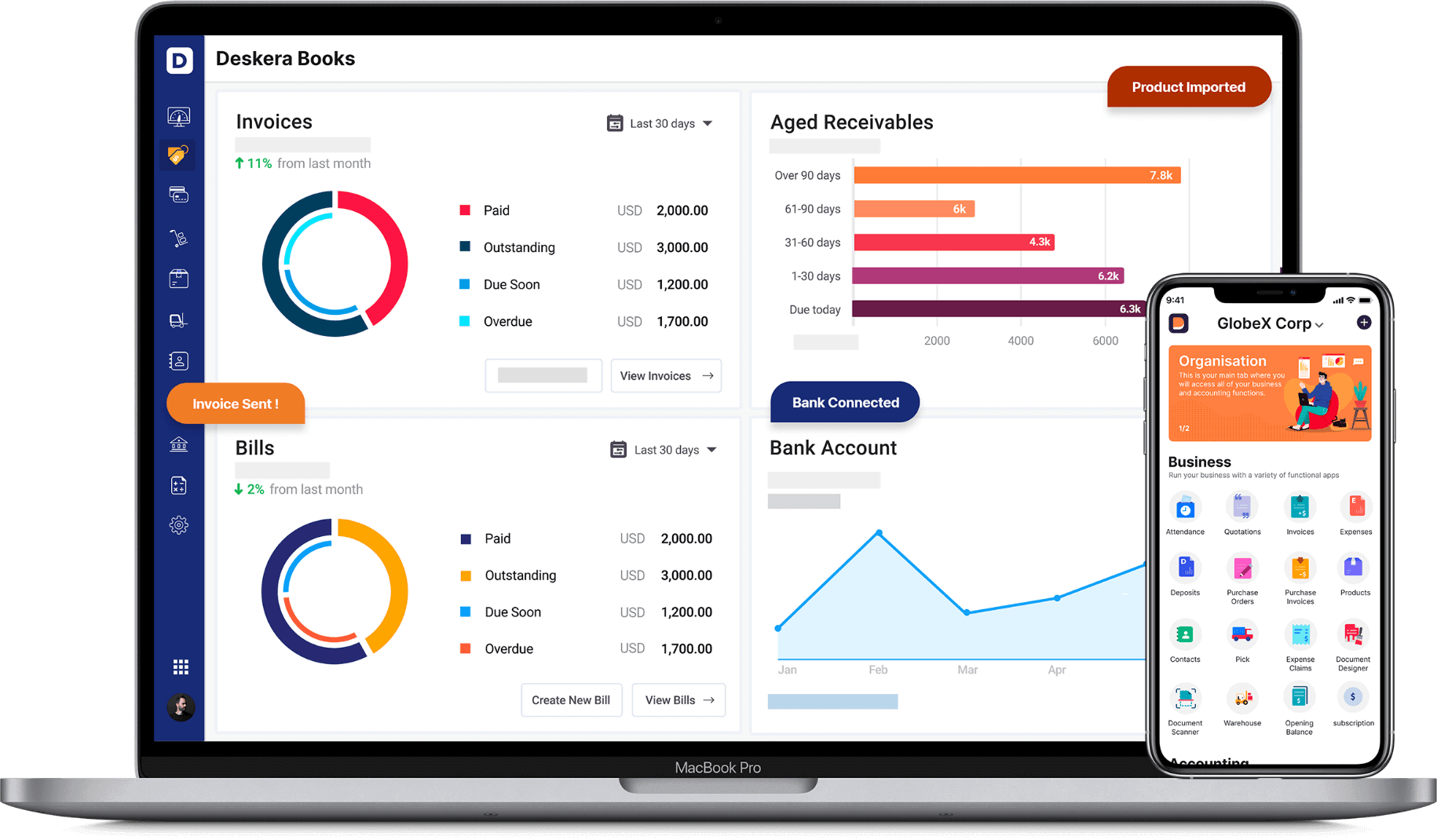Businesses are constantly searching for fresh approaches to boosting their bottom line. Making the correct decisions is the key to success, and one of those is building your company model on proven facts and cutting-edge analytics.
The way that technology and tools are used to measure business intelligence has changed recently. However, this strategy can have a drawback. Over-reliance on platforms and dashboards might distort your perspective.
Because of this, it's crucial to take business insights into account while developing business intelligence. Instead of focusing on what has been, business insights offer a nuanced perspective of what may be. Owners of businesses that make decisions based on past results are certain to miss important opportunities.
You may use your tools more effectively by incorporating business insights into your strategy. Let's dive deeper to see how business insights can be beneficial.
Table of Content
- Difference Between Analytics and Insights
- Importance of Data to Gather Business Insights
- Key Factors to Get Business Insights from Data Analysis
- Four-Step Guide To Understand The Journey from Data to Business Insights
- An Overview of Business Insights
- How To Create Actionable Business Insights?
- What Are Deeper Insights?
- How to Create a High Level of Business Insights?
- Bottom Line
- How can Deskera Help You?
- Key Takeaways
Before we move forward, let’s understand the difference between analytics and insights.
Difference Between Analytics and Insights
While data may be seen over time or by campaign using analytics or analysis, insights are the conclusions you get from the analysis. The knowledge gained via analysis aids in developing a precise grasp of a circumstance, a scenario, or occasionally, a person.
Insights are what you obtain from studying the data, whether we're talking about insights about your target market, insights about marketing or SEO effectiveness, or insights about particular contributions to an entire endeavour.
Insights are what the majority of consumers genuinely want from a product. These are the concrete recommendations you incorporate into your paid advertising, social media, public relations, email, content marketing, and other strategic initiatives. You may utilise insights to select what content to publish next, to figure out why a rival is outranking you in the SERPs, or to gain a larger share of voice on social media.
Let's hop on the bandwagon of learning business insights in-depth after getting a broad understanding of what analytics and insights are. But before that, don't you believe we should concentrate on the significance of data volume and how to gain practical business insights.
Importance of Data to Gather Business Insights
Data is a highly useful source of information in today's highly intelligent and information-based corporate environment.
But a lot of businesses are squandering time by hoarding important data that business analytics simply disregards. Data is not fully utilised in the business unless managers actively use, evaluate, and build knowledge from it.
Data insights are crucial because they can reveal chances for development while fostering a deeper understanding of a company's operations and markets. However, this can only be done if data is truly used and properly used across the board of the organisation. The advice provided below explains how managers might maximise the knowledge they currently have.
Key Factors to Get Business Insights from Data Analysis
A business should decide what the objectives of a forthcoming data analysis project are before beginning any study. What knowledge and information does management want to gather from the available information sources? It requires taking into account the following crucial elements.
Context
Consider the bigger picture as a starting point. How would these targeted objectives seem after data analysis is complete? To frame analysis in a wider context, management should identify goals proactively and set project deadlines and milestones.
Need
Management should design an analysis project to best meet the organization's most pressing demands in order to maximise the use of resources. Establishing a need aids in effectively guiding analysis, whether the goal is to increase overall income, reduce specific costs, or improve operational efficiency.
Vision
The project should incorporate a vision. Management should be aware of any logical answers to company issues as well as how to use data and information to do so.
Outcome
The project's target goal must constantly be kept in mind during the analysis phase. Although data mining and analysis are iterative processes, having a continuous end in mindsets boundaries and concentrate attention on the current project. Consider the following: How will these results be used? Who will use the outcomes? What are the relevant quantifiable goals?
Business growth is greatly influenced by insights. Any firm that wants to get the greatest outcomes must have a manual approach that will help them gather insights from the start, streamline their approach, and concentrate on the proper technique. Most essential, never disregard crucial information that might advance corporate objectives.
Let’s have a quick look at the 4-step guide to understanding this procedure correctly.
Four-Step Guide To Understand The Journey from Data to Business Insights
· Collect: Any corporation may benefit from solid business intelligence from a sizable, high-quality database. For instance, network engagements, forums, blogs, reviews, website click streams, and ad engagements can all be used to acquire data about potential customers.
· Connect: Data may be overwhelming and extensive, offering several sources of information in various locations. It might be designed in a way that hinders analysts from making connections rather than the other way around. More information may be produced by joining and linking various data types and sources than by relying just on fragmented data.
· Manage: In a society that is centred on social media, companies exist and thrive. With the appropriate methods and tools, a lot of data can be gathered from these quick exchanges and utilised. While some data points may be readily saved, certain information can only be accessible in real-time.
· Discover and analyze: Finally, leveraging the data to find crucial business insights requires cooperation. Data scientists, marketing specialists, and other subject matter experts from throughout the company should be included in this process. The objective is to provide significant data that may be used to achieve various business objectives.
An Overview of Business Insights
A competitive matrix and big data analysis are two decision-making techniques that can help small business owners make wise decisions. Although using these models alone isn't always the best method to get real business insights, you may use them in combination with other techniques to achieve so.
A business insight combines data and analysis to make sense of and deepen your understanding of a situation, giving your company a competitive edge. This gives you greater insight into the key mechanisms relating to your own business, going beyond a basic grasp of a problem. Setting the scene for the circumstance and properly stating the conundrum to all participants in the discussion are two elements in the process of developing business insights.
Then, you ought to be able to explain why something actually happens in reality and perhaps identify some of the factors that influence customer behaviour in relation to the insight. The last step of articulating the ideal experience from the standpoint of the consumer is frequently easy to complete when you accomplish this.
Analyzing these procedures does not ensure that you will be able to get business insight. There is no foolproof method for making these assistants, and you and your team frequently need to think critically about them. Thanks to the immense growth that business insights have the ability to enable, our effort exactly demonstrates their worth to the firms that uncover them.
You may find a revolutionary product in any industry, and behind each revolutionary product, you usually find one or more insights into the psychology of consumers or the workings of the company that uses it. Businesses that offer the most insights are more likely to succeed.
How To Create Actionable Business Insights?
If insights enabled you to accomplish the following, they would be regarded as actionable:
· Analyze the existing situation with accuracy
· Set objectives for the future.
· Understand how to assess the success
Business objectives should, in short, be in line with the data that supports them. You must take into account things like KPIs and strategic corporate goals if you want to get practical insights from data.
Therefore, you should concentrate on the data pertinent to this specific objective if you're aiming to enhance only one part of your company process. In a similar vein, bear in mind that developing strategic business insights that would revolutionise the entire firm calls for a distinct set of data.
In the above sections, we have read about how data plays an important role in business insights. Let’s dive deeper into how to make use of data.
What Are Deeper Insights?
Your choice of business intelligence tools is undoubtedly crucial. However, you must also make an effort to compile useful information about your organisation. Business insights were once primarily utilised for knowledge evaluation and sales forecasting.
These frequently focus on things like the supply chain, the product, and boosting profits. This might be a reference to the profitability of either the product or the consumer. Operators of production lines require this crucial information to make informed choices.
This industry-vertical application is departmental functions-focused. This may be expanded by using a horizontal strategy.
That entails utilising cross-organizational data to link all pertinent components together. By doing this, you'll have a shared perspective that will enable you to anticipate upcoming trends in many facets of your business.
Additionally, it will assist you in determining the results of your efforts. A successful business needs actionable knowledge of this kind. In essence, this degree of corporate knowledge enables one to see how one activity impacts other areas. Staffing, liquidity, and cash flow are a few examples of these categories.
Will it ultimately result in your profitability? What impact will it have on your clients? You'll get the inside scoop to choose the best course of action for your organisation thanks to business insights.
Let’s have a look at how you can build a high level of business insights.
How to Create a High Level of Business Insights?
There are a few things you need to consider when building an effective business intelligence solution. Let's explore.
· Powerful Data Structure: This is derived from the apps used by your company. These comprise matters like supply chain management, client records, and financial accounting. Basically, any regions that allow you to view your firm vertically.
When you combine them, you can sort of see the overall image. Additionally, you may successfully ascertain the purpose of your business at about any time. Then, you may combine this data to create horizontal data pieces.
You can arm your leaders with the knowledge they require once you have this expertise. It will enable them to make the necessary adjustments to your business. Data extraction techniques are useful in this situation.
· Look Ahead: You need to look ahead rather than back when examining business analytics activities. You may overlook opportunities to enhance your business when you concentrate on what you've already done rather than what you still have to accomplish. Such sophisticated analytics are simply too advantageous to ignore.
· Use the Right Tools: Finally, be sure to employ the appropriate reporting tools. You may enter the data you've gathered into the ideal tool to better manage your teams and projects. Want to manage your time more effectively and more closely? You can accomplish all of that and more with the right tool.
Having the correct tools at your disposal is crucial for success. You may begin adjusting various aspects of your organisation after you know what data to enter into your tool. The main objective is to implement significant improvements for your firm.
Business insights also enable you to observe how changes you make affect your company across a variety of domains.
Bottom Line
How would business insights aid your company? You will learn the ins and outs of business insights by following all the instructions and information connected to business insights offered in this article.
You can be confident that the decisions you make going forward will be better now that you have the data and understand how important it is to have the right tools to see a genuine picture of your organisation.
How can Deskera Help You?
Deskera Books can help you automate and mitigate your business risks. Creating invoices becomes easier with Deskera, which automates a lot of other procedures, reducing your team's administrative workload.
Sign up now to avail more advantages from Deskera.

Learn about the exceptional and all-in-one software here:
Key Takeaways
· The way that technology and tools are used to measure business intelligence has changed recently.
· The knowledge gained via analysis aids in developing a precise grasp of a circumstance, a scenario, or occasionally, a person.
· Data is a highly useful source of information in today's highly intelligent and information-based corporate environment.
· A business should decide what the objectives of a forthcoming data analysis project are before beginning any study.
· Business growth is greatly influenced by insights. Any firm that wants to get the greatest outcomes must have a manual approach that will help them gather insights from the start, streamline their approach, and concentrate on the proper technique.
· A business insight combines data and analysis to make sense of and deepen your understanding of a situation, giving your company a competitive edge.
· You must take into account things like KPIs and strategic corporate goals if you want to get practical business insights from data.
Related Articles












